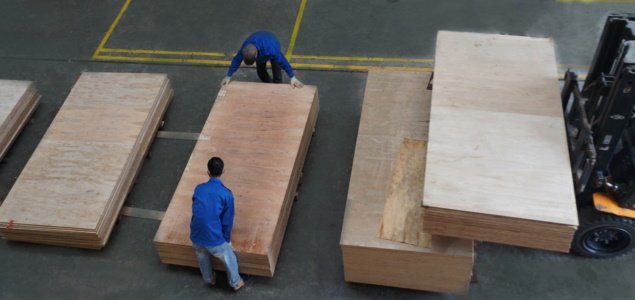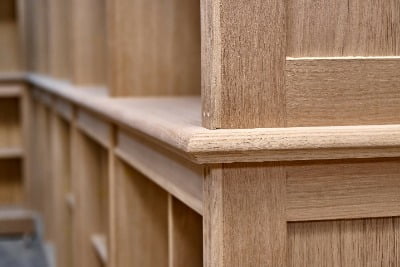The criteria for being considered environmentally friendly encompass products that are ecologically sustainable, avoiding depletion, deforestation, and greenhouse gas emissions in the wood industry. This involves prioritizing forest protection and ensuring the well-being of local communities. During the manufacturing phase, adherence to these criteria is essential for eligibility to be exported to prominent global markets.

Whether businesses in wood processing and export prefer it or not, they must swiftly adjust, undergo transformation, and confront challenges to shift towards environmentally friendly practices. This adaptation is necessary to align with the laws and regulations of major markets like the United States, the European Union, South Korea, and Japan. These markets are progressively introducing measures to monitor and evaluate the carbon footprint of imported wood products.
Engaging in green production and establishing an eco-friendly supply chain are actions taken by businesses to ensure the sustainability of their business development. Nevertheless, experts point out that, currently, wood processing businesses have not wholeheartedly and thoroughly adopted green production practices.
As per Mr. Nguyen Quang Bao, the head of the Forestry Department, some businesses have not completely acknowledged the significance of green criteria in wood processing and export. Consequently, they are lagging behind in transitioning to fulfill the market’s demands.
The primary reason is that most businesses are yet to acknowledge the significance of transitioning to environmentally friendly production methods for sustainable development, and they exhibit reluctance towards change. Currently, the wood industry is not under considerable pressure to reduce carbon emissions. However, in the future, compliance with such regulations is anticipated to become obligatory.
Henceforth, wood businesses must alter their conventional approaches to include emission reduction, implement eco-friendly practices in the existing supply chain, and perceive this as a chance for production transformation rather than a challenge. As previously mentioned, prominent markets such as the EU and the United States will imminently introduce regulations to evaluate the carbon content of imported goods.
However, the issue is that even when wood businesses are willing to transition to green practices, they have not received specific guidance on the technology for processing forestry products to determine how green it is, including instructions on measuring greenhouse gas emissions.
Furthermore, embracing green production sets in motion a genuine revolution. While the transition to green manufacturing technology, adoption of eco-friendly materials, fuels, and electricity, and adjustments to management processes during this shift may escalate production costs, it remains crucial for sustainable development.
Nevertheless, the focus on a production revolution is reinforced by the outcomes it produces. Wood processing businesses stand to gain substantial advantages in global competition due to the prevailing trend where consumers are increasingly prioritizing green products—those that avoid depletion and deforestation as well as do not emit greenhouse gases during production.
Hence, wood processing businesses that successfully attain green production objectives and establish a green supply chain will cultivate trust and credibility with customers. In the future, carbon border adjustment mechanisms are being introduced in key export markets for Vietnam’s forestry products, including the EU, the United States, and Japan. Products aligning with green production goals and maintaining a green production chain will be exempt from greenhouse gas emission fees, which typically surpass the expenses associated with transitioning to green production.
Therefore, Vietnamese wood processing businesses should proactively embrace the trend, rather than waiting, to swiftly gain a competitive edge in the future.
Source: goviet.org.vn




